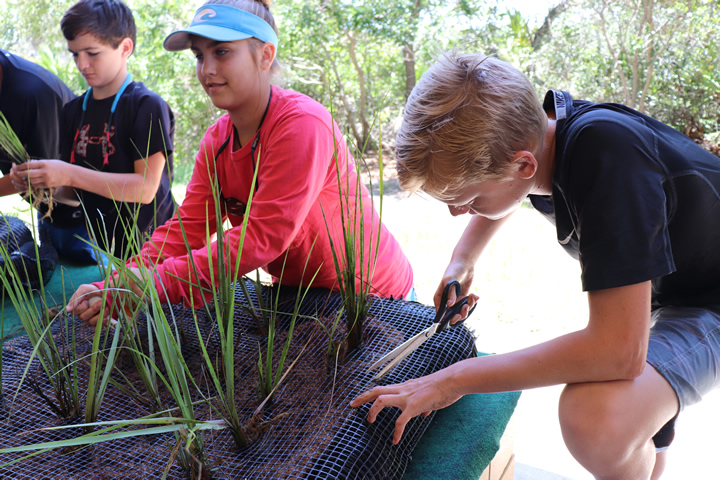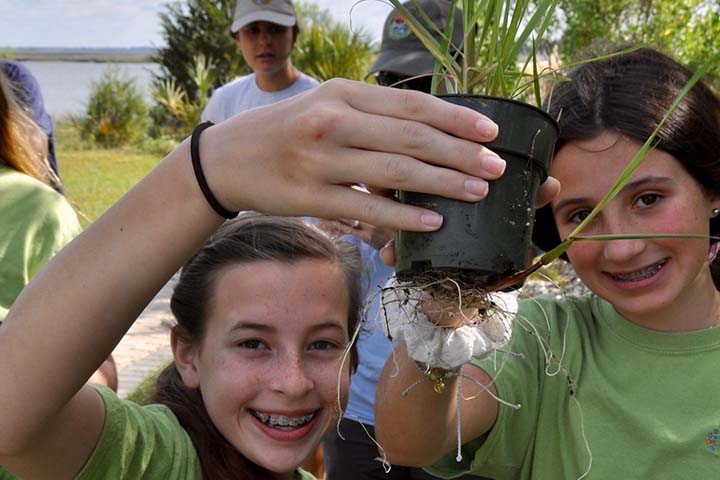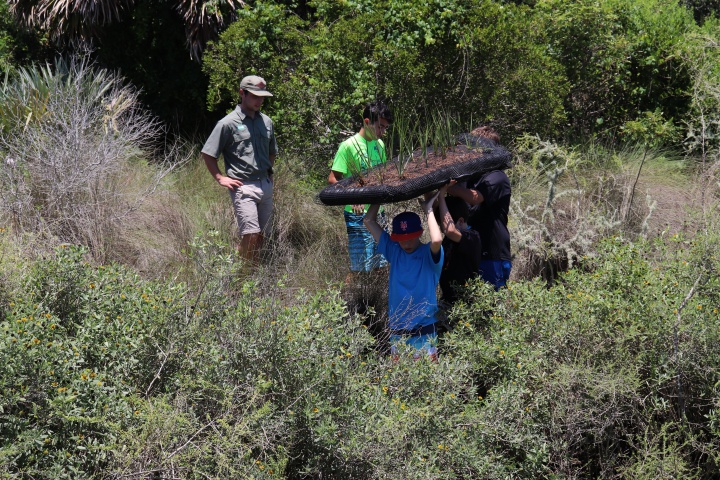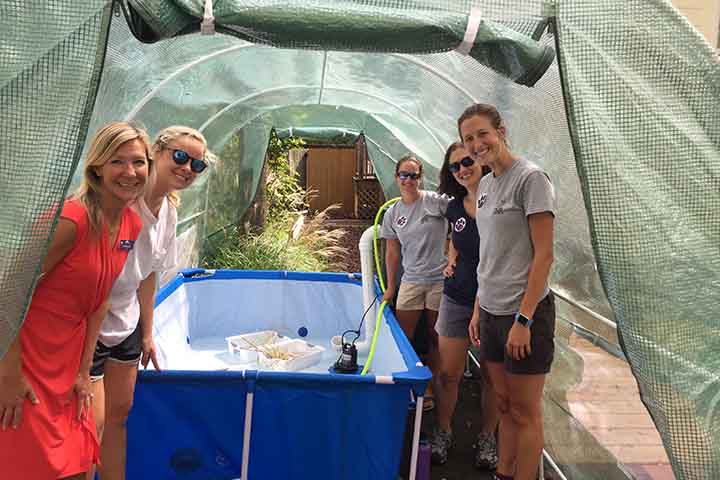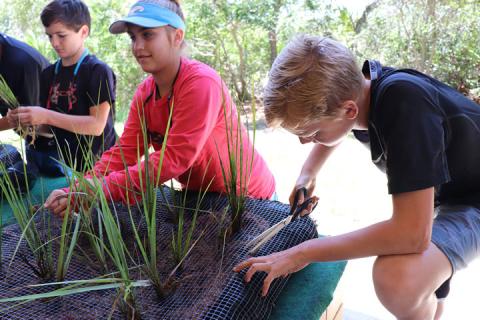
Involving students in restoration not only teaches core science concepts, it also empowers new generations of estuarine stewards. In the Southeast, salt marsh and tidal creek restoration is a key strategy to reducing risks to these ecosystems and enhancing their contributions to healthy water, coastal flood and erosion protection, and fisheries habitat. To engage students in these efforts, the ACE Basin, Guana Tolomato Matanzas, North Carolina, North Inlet-Winyah Bay, and Sapelo Island Reserves created a region-wide project-based learning program for salt marsh-tidal creek restoration.
Building on the success of the Seeds to Shoreline (S2S) and Spartina Transplant and Restoration (STAR) programs, these southeastern reserves worked with 18 participating schools in North Carolina, South Carolina, Georgia, and Florida to expand understanding of estuarine habitat, build scientific and technical skills, and contribute to local restoration efforts. Reserves supported teachers through each stage of the project by providing professional development opportunities, standards-based lesson plans, and an online interactive resource center. Students grew and transplanted smooth cordgrass (Spartina alterniflora) to eroded marsh and/or floating cordgrass islands near their schools. Ultimately, the project grew a community of practice among educators and reserves, expanded the use of salt marsh focused curriculum, increased plant growth in degraded ecosystems, and gave students the tools to be effective ecological stewards in their communities.
